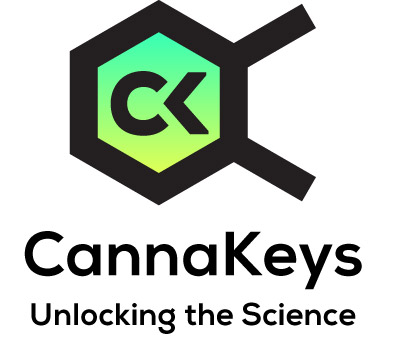As cannabis medicine becomes more nuanced, so too does our understanding of how cannabinoids interact with the classical endocannabinoid system (ECS) and the larger environment defined as the endocannabinoidome (eCBome). But what if we could control cannabinoid effects in real-time, with the flip of a switch—literally?
Two groundbreaking studies now make that possible, using a technology called photopharmacology. This emerging field allows researchers to control the activity of cannabinoid receptors like CB1 with light-activated THC analogs—offering stunning insights into ECS function and future therapeutic precision.
What Did the Studies Show? A 2017 study first introduced azo-THC, a photoswitchable analog of THC that changes shape—and activity—when exposed to different wavelengths of light. This compound allowed researchers to turn CB1 receptor activation on and off in cell cultures, helping clarify THC’s role in appetite, reward, and mood regulation with unprecedented temporal control1.
Fast-forward to 2024, and scientists have now created PORTL-THC24, a tethered, light-activated THC analog that offers even more precise cell-specific control over CB1 receptor signaling. Unlike traditional THC, PORTL-THC24 activates CB1 without causing receptor internalization, and its effects can be rapidly reversed by changing light conditions2.
Practical Takeaways for Cannabis Clinicians: While photopharmacology isn’t coming to dispensary shelves any time soon, these findings provide key insights with real-world implications for cannabinoid-based therapeutics:
- CB1 Is More Nuanced Than We Thought: These tools confirm that timing, receptor location, and duration of CB1 activation are all critical variables—not just dosage. Clinicians may begin to think more about how long a product’s effect is sustained and which tissues it’s most likely to act upon.
- Microdosing THC May Mimic “Pulse Activation”: Just as these light-triggered molecules allow for brief, reversible receptor activation, low-dose or intermittent THC administration may offer therapeutic benefits without triggering tolerance or receptor downregulation. This supports the clinical observation that less is often more when prescribing THC, especially for anxiety, PTSD, or appetite stimulation.
- Targeted Cannabinoid Delivery May Be the Future: These studies offer a roadmap toward precision cannabinoid therapies—especially for conditions like epilepsy, chronic pain, or neuroinflammation, where spatial targeting (e.g., gut vs. brain vs. immune tissue) may dramatically alter the therapeutic response.
- New Clinical Insights into THC Side Effects: Because CB1 receptor internalization is linked to desensitization and tolerance, understanding which THC formulations cause this effect (and which do not) may help explain why some patients become less responsive—or more anxious—with prolonged use.
- CBD and Terpene Modulation Still Matter: These studies focus on THC analogs, but clinicians should remember that co-administered cannabinoids (like CBD) and terpenes can modulate CB1 activity indirectly, supporting more stable therapeutic responses.
The Clinical Bottom Line: We are entering an era where real-time modulation of the ECS is no longer science fiction. As tools like azo-THC and PORTL-THC24 help decode cannabinoid receptor dynamics, clinicians will be better equipped to make precision-based treatment decisions—informed not only by dose and ratio, but by timing, tissue targeting, and the delicate dance between cannabinoid tone and patient response.
Stay tuned—light-sensitive cannabinoids may soon illuminate new therapeutic pathways.
Footnotes
- M. V. Westphal et al. Synthesis of Photoswitchable Δ9-Tetrahydrocannabinol Derivatives Enables Optical Control of Cannabinoid Receptor 1 Signaling. J Am Chem Soc. 2017 Dec 20;139(50):18206-18212.
- S. Garza et al. Real-Time Optical Control of CB1 Receptor Signaling In Vitro with Tethered Photoswitchable THC Derivatives. ChemRxiv. 2024.


